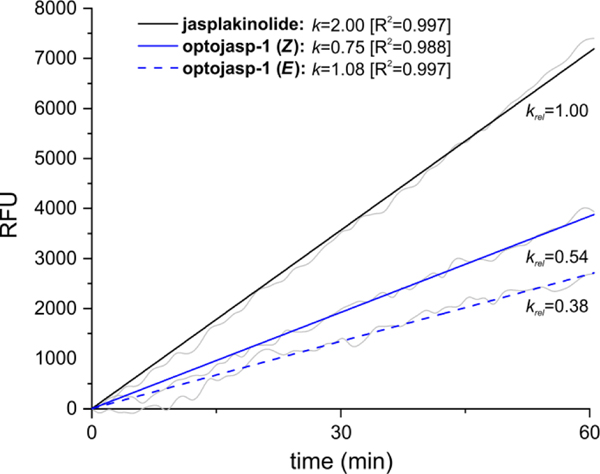Figure 5.
Illumination dependent capacity of optojasp-1 for inducing actin-polymerization in vitro. trans-optojasp-1, cis-optojasp-1, or jasplakinolide (3, 20 μM each) were incubated with pyrene-labelled actin (5 μM) under low salt, non-polymerizing conditions.31 Polymerization was monitored by pyrene fluorescence emission measurement at λEm = 410 nm after low intensity excitation at λEm = 350 nm in 60 s intervals over 4 h at 37°C. Optojasp configuration remained stable under these conditions (see Fig. S5). Data are shown for the initial linear phase (1 h). All measurements were performed in duplicates in 384-well plates. RFU: relative fluorescence units, detector response normalized to fluorescence of pyrene-labelled G-actin in non-polymerizing buffer. External fluorophore 16 was added to 3 to correct for azobenzene absorbance; k: slopes of linearly fitted curves in RFU/s; krel: comparative potential for induction of actin polymerization, normalized to jasplakinolide (krel = 1).

